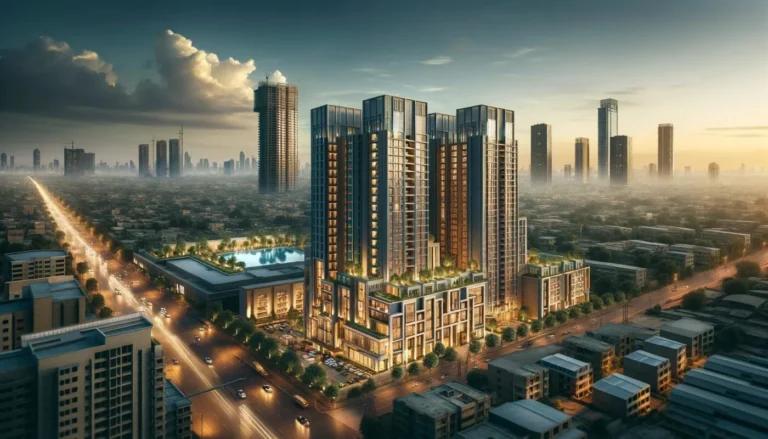Pakistan is undergoing a significant transformation as urbanization accelerates at an unprecedented pace. With over 60% of the population projected to live in urban areas by 2030, this shift is reshaping not only the demographic fabric of the country but also the real estate landscape. The implications of this rapid urbanization are profound, impacting housing demand, infrastructure development, and investment opportunities across the nation.
Understanding Urbanization in Pakistan
Urbanization refers to the increasing number of people living in urban areas, driven by factors such as economic opportunities, better living standards, and improved access to services. In Pakistan, cities like Karachi, Lahore, and Islamabad are witnessing a surge in population as people migrate from rural areas in search of jobs and a better quality of life. This movement is fueled by the promise of urban amenities such as education, healthcare, and entertainment, which are often lacking in rural settings.
The Impact on Housing Demand
As urban populations swell, the demand for housing is skyrocketing. The current housing shortage in Pakistan is estimated to be around 10 million units, a figure that is expected to rise as more people flock to cities. This demand has given rise to various housing solutions, from high-rise apartments to gated communities, as developers seek to cater to the diverse needs of urban dwellers.
However, the challenge remains: much of the new housing development has been concentrated in affluent areas, leaving low-income families struggling to find affordable options. The government and private sector must collaborate to create inclusive housing policies that address this disparity and provide affordable housing solutions for all socioeconomic groups.
Infrastructure Development
Urbanization is not only about housing; it also necessitates significant infrastructure development. Cities are expanding their road networks, public transport systems, and utilities to accommodate growing populations. The construction of major infrastructure projects, such as the Lahore Metro and Karachi Circular Railway, aims to improve connectivity and reduce congestion.
These projects are crucial for enhancing the overall urban environment and making cities more livable. They also present lucrative investment opportunities for real estate developers. Properties located near new transport hubs or infrastructural developments tend to see a rise in value, attracting both investors and homebuyers alike.
Commercial Real Estate Growth
With urbanization comes the expansion of commercial real estate. As cities grow, so does the demand for retail spaces, offices, and industrial zones. The rise of e-commerce has further accelerated this trend, leading to increased demand for logistics and warehousing facilities.
In major urban centers, shopping malls and commercial complexes are becoming hotspots for social interaction and business activity. Developers are increasingly focusing on mixed-use developments that combine residential, commercial, and recreational spaces, providing a holistic living experience for urban residents.
Challenges of Urbanization
While urbanization presents numerous opportunities, it also brings significant challenges. Rapid urban growth often outpaces the capacity of local governments to provide essential services, leading to issues such as traffic congestion, pollution, and inadequate waste management. Informal settlements, or slums, can arise in response to housing shortages, exacerbating social inequalities and public health concerns.
Addressing these challenges requires innovative urban planning and policy frameworks that prioritize sustainable development. Cities need to adopt smart growth principles that promote density, mixed-use development, and public transportation, ensuring that urbanization benefits all residents.
Investment Opportunities
For investors, urbanization in Pakistan offers a wealth of opportunities. The real estate market is expanding rapidly, driven by both local and foreign investment. The demand for residential and commercial properties is expected to continue growing, making it an attractive sector for investment.
Emerging cities, such as Faisalabad and Multan, are gaining attention as potential investment hubs. With developing infrastructure and a growing middle class, these cities present opportunities for both residential and commercial real estate investments.
Conclusion
Urbanization is a powerful force reshaping Pakistan’s real estate landscape. While it brings challenges, it also offers significant opportunities for developers, investors, and policymakers. By focusing on sustainable urban development and addressing the housing crisis, Pakistan can harness the potential of urbanization to create thriving, inclusive cities.
As the country moves forward, it is essential for stakeholders to collaborate and implement strategies that will not only meet the housing demands of a growing population but also ensure that urbanization leads to improved living standards and economic growth. The future of Pakistan’s real estate market hinges on how effectively it adapts to and embraces the challenges and opportunities presented by urbanization.

